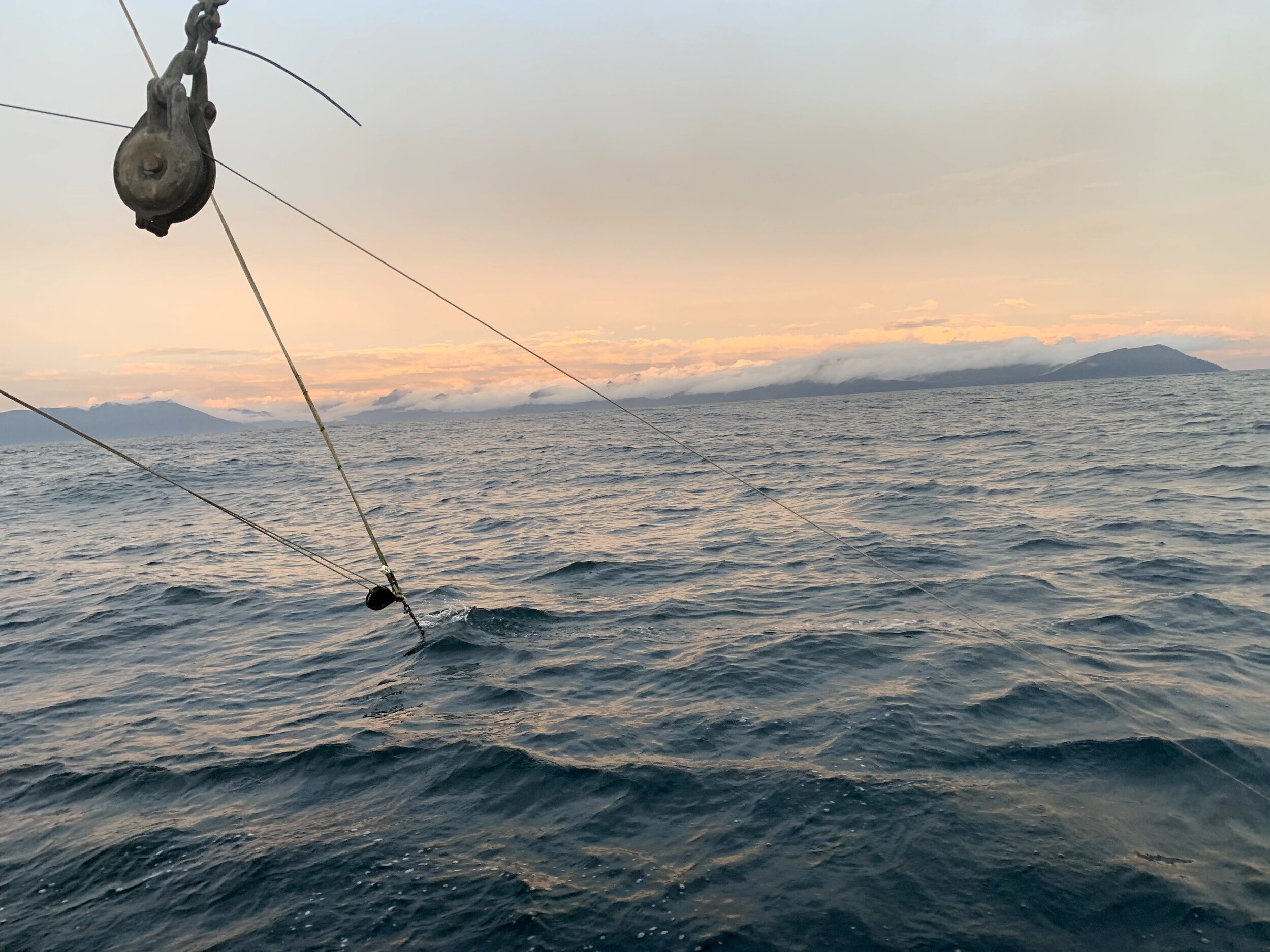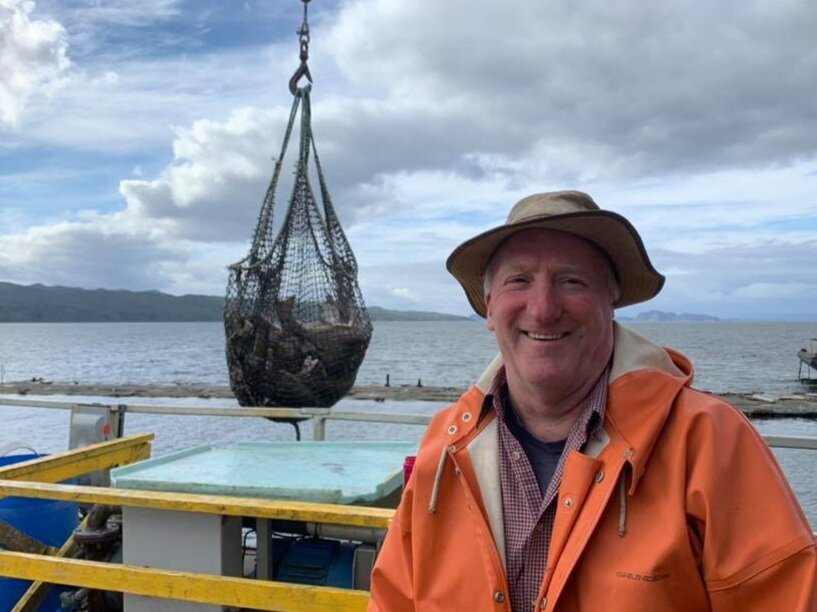
All of our fish are caught by hook and line in the waters of British Columbia.
Our Fishing Techniques.
Longlining
An explanation in a non-fisherman way as putting a floaty thing ("buoy") on the end of a rope. That rope is attached to a weight and another long rope which the crew attach ("snap") baited hooks onto. On each "set" (as the fishermen call this whole system I'm talking about here) they will have about 1000 hooks. These hooks stay on the bottom of the ocean where the halibut like to live and eat. The crew add weights and buoys along the rope to ensure the hooks stay close to where the fish are but don't disturb the sea floor. At the end of the rope with all the hooks there is another weight and a piece of rope up to another buoy on the surface of the water. The buoys have flags attached to them so the boat can find them in the waves.
After a few hours (or the gear has "had a soak" as the fishermen call it) the crew will go to "find an end" and start bringing the rope, hooks and hopefully fish back into the boat (this is what they call "hauling"). Captain Jordan will take the hook and fish off of the rope and hand the fish to one of his deckhands while hanging the hook on a rack. The crew will take the internal organs out ("dress") the fish and put them down in the hatch layering with flaked ice to keep them fresh until they get into harbour.

Trolling
Salmon Trolling is the fishing method where the boat drives around with hooks in the water looking for hungry fish. For salmon, the boat has six lines (three on each side) in the water. Each line has multiple hooks on it. Each hook has in front of it a flasher (spinney shinny thing that makes it look like another fish is getting a snack). On the bottom of the line is a heavy lead weight (aka “a cannon ball”) that keeps the line nearly vertical in the water. Once the hooks are in the water, Jordan drives the boat around for a while at 2 knots and the fish, thinking they are in for a nice treat, bite on the hooks. Jordan then hauls the hooks back into the boat.
Gang Trolling (pictured here) is similar to salmon trolling, however, instead of six lines in the water at a time there is only one. That line has a weight at the end of it and a train of hooks is then attached to the weight. It takes a lot of skill to ensure the hooks stay near the bottom of the ocean where the fish hang out but don’t touch the floor of the ocean (“get hung up”). Unlike salmon trolling, where the boat goes 2 knots, with gang trolling the boat tries to maintain 3 knots of speed in relation to the ocean floor – this changes what speed the captain needs the boat to go depending on what the tide is doing underneath the boat. Gang trolling is a more complicated way of fishing but ensures very little bycatch (fisherman speak for fish they catch without targeting them).
Tuna Trolling is when the boat has six to twelve hooks that skip across the surface of the water (or a couple feet under the surface) in a V pattern. As the hooks skip across the water it looks to the fish that there is another fish feeding (one they would like to eat) so they bite the hooks behind the commotion. There is no weight on the bottom of the lines. Also, with tuna trolling, the boat is always trying to maintain 5 knots of speed. This doesn’t sound fast but the boat cruises at 7.5 knots so its almost cruising speed!
When we offload.
The crew get all of the fish out of the hull of the boat and into a net.
Shown here are Jordan’s niece Brooke and nephew Sebastian - they often fish with Jordan’s dad but have fished a few trips with all their uncles as well.
The fish are lifted out of the boat in a net to be validated.
Here, Jordan’s dad (Captain Adrian or Captain Grandpa depending on who you ask) watches his catch be lifted off his boat to be validated.
Validators will count the species and ensure everything being brought in by the boat is by the book. All the validator counts need to align with the counts from the boat, as well as what the cameras on the boat show.



